Coronavirus: How to understand the death toll

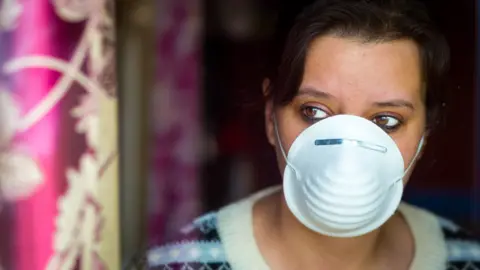 Getty Images
Getty ImagesEach day, news of more deaths is distressing to people across the country - as well as a tragedy for the families involved.
Projections of how bad the outbreak could get have prompted ministers to put the country into lockdown.
But what are we learning about the impact of the virus and the deaths it is causing?
Is coronavirus causing the deaths?
The death figures being reported daily are hospital cases where a person dies with the coronavirus infection in their body - because it is a notifiable disease cases have to be reported.
But what the figures do not tell us is to what extent the virus is causing the death.
It could be the major cause, a contributory factor or simply present when they are dying of something else.
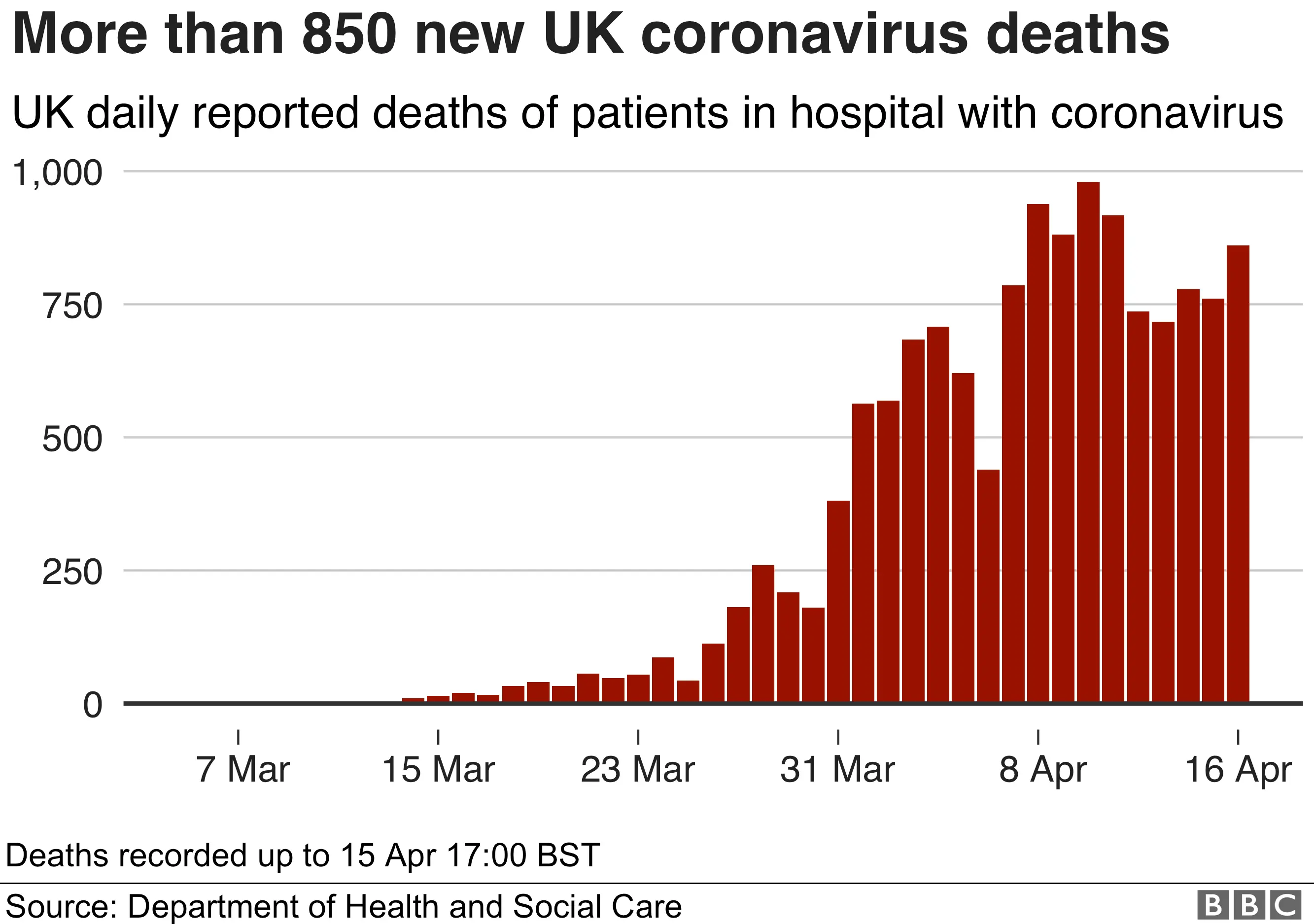

For example, an 18-year-old in Coventry tested positive for coronavirus the day before he died and was reported as its youngest victim at the time.
But the hospital subsequently released a statement saying his death had been due to a separate "significant" health condition and not connected to the virus.
There are, however, other cases, including health workers, where people have died with no known health conditions.
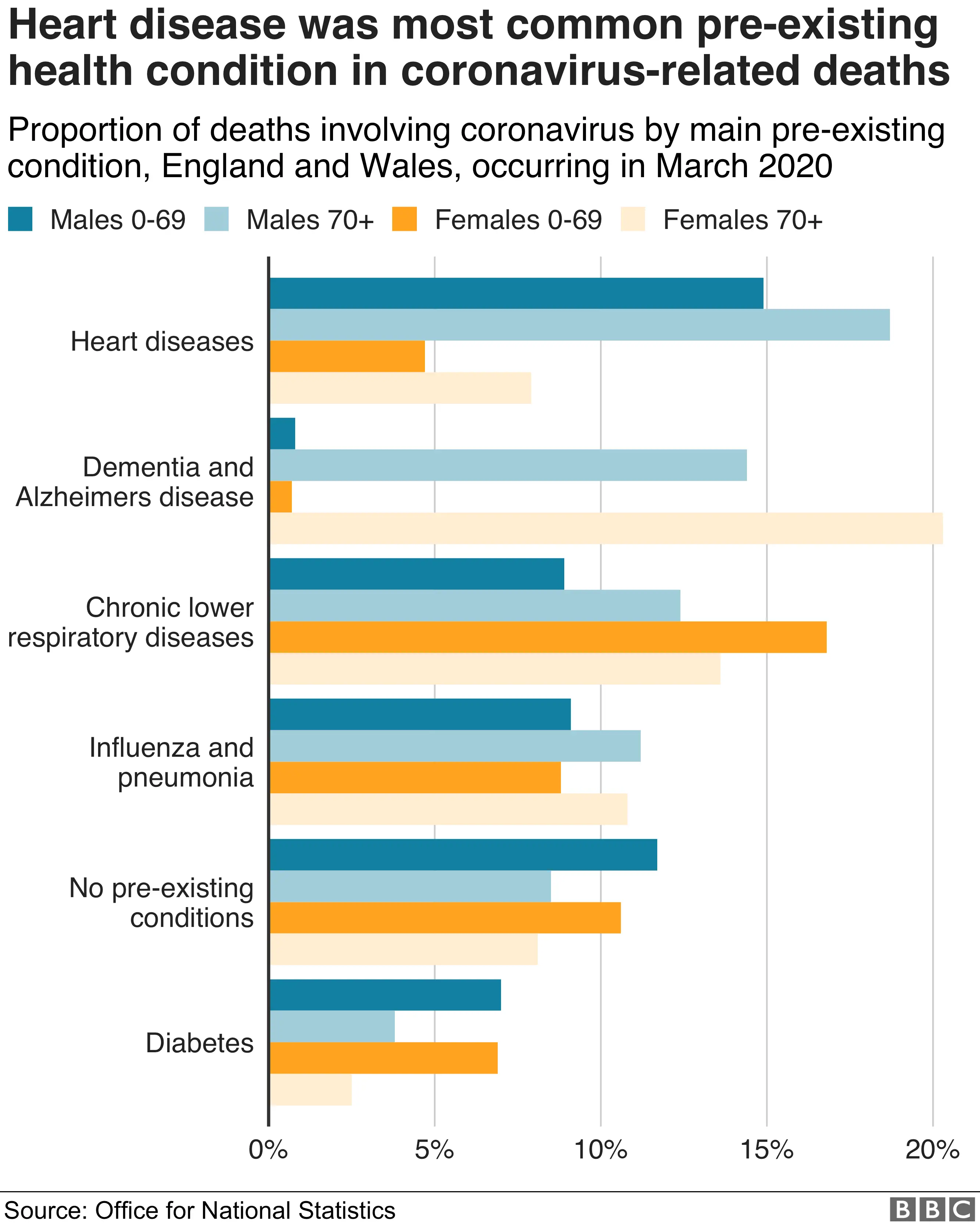

The Office for National Statistics has tried to shed light on this. It looked at nearly 4,000 deaths in England and Wales during March.
There were two main findings. Firstly, the virus was the cause of the majority of deaths, not other factors.
But secondly, nine in 10 did have pre-existing illnesses, such as heart disease and respiratory problems that put them at heightened risk of death anyway.
How many more people are dying?
It is clear that the number of people who are dying is increasing.
The ONS has started to track this as well on a weekly basis - and unlike the daily government figures, which largely focus on hospital deaths, it is taking into account deaths in the community.
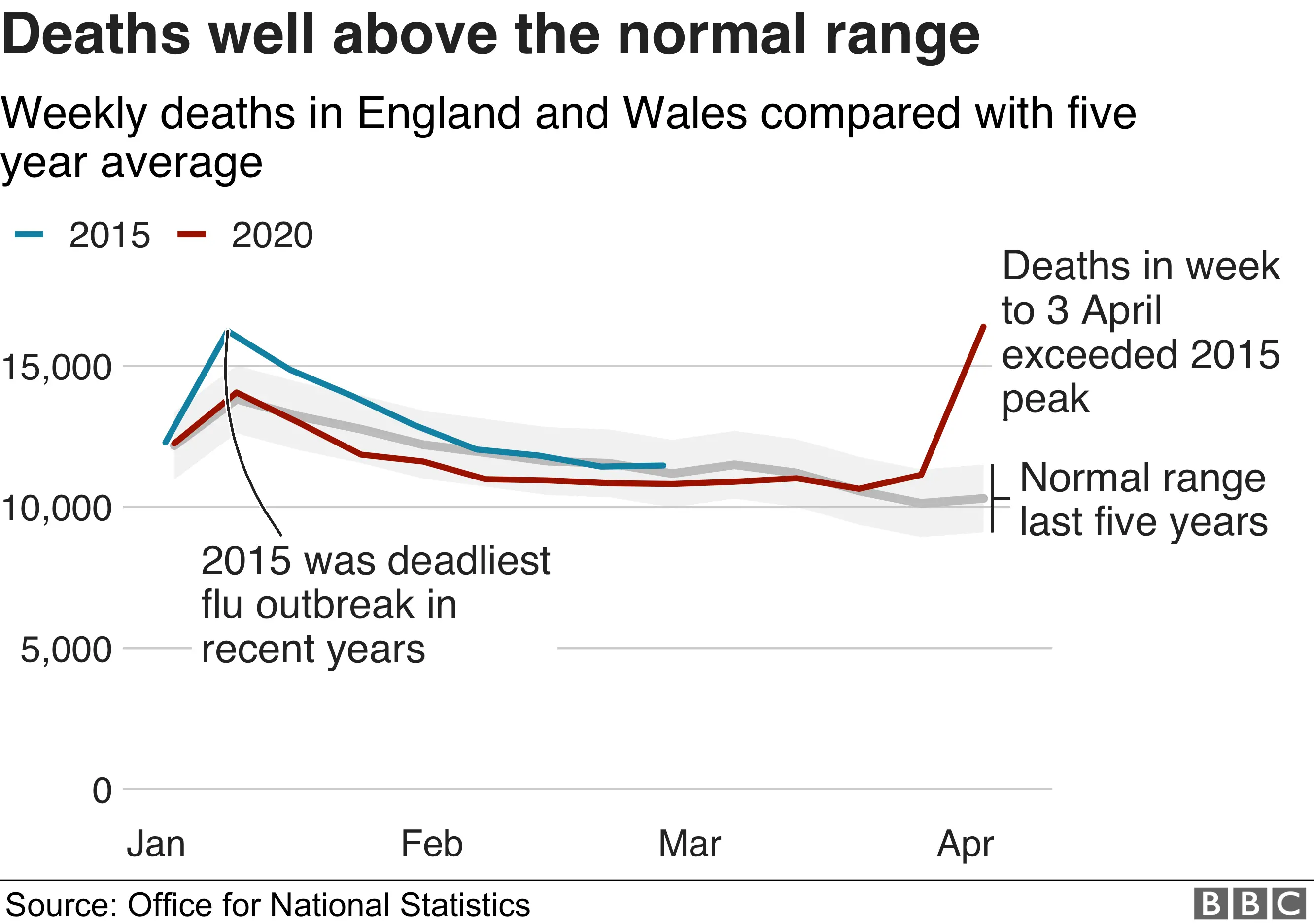
The most recent data goes up to the start of April.
It shows in the week ending 3 April there were 16,000 deaths - 6,000 more than could be expected at this time of the year when the number of deaths normally starts to fall with winter over.
This is the highest death number since these figures were first published in 2005, more than the previous peak seen during the bad flu outbreak of 2015.
Not all these extra deaths were down to coronavirus, but a significant number were.
What we do not know is what will happen to these numbers in the future and whether in a few months time deaths will drop below expected levels.
If that happened, it would suggest coronavirus has brought forward deaths that you would expect to happen over the course of the next year.
Is the virus bringing forward deaths by a few months?
Every year, about 600,000 people in the UK die. And the frail and elderly are most at risk, just as they are if they have coronavirus.
Nearly 10% of people aged over 80 will die in the next year, Prof Sir David Spiegelhalter at the University of Cambridge points out, and the risk of them dying if infected with coronavirus is almost exactly the same.
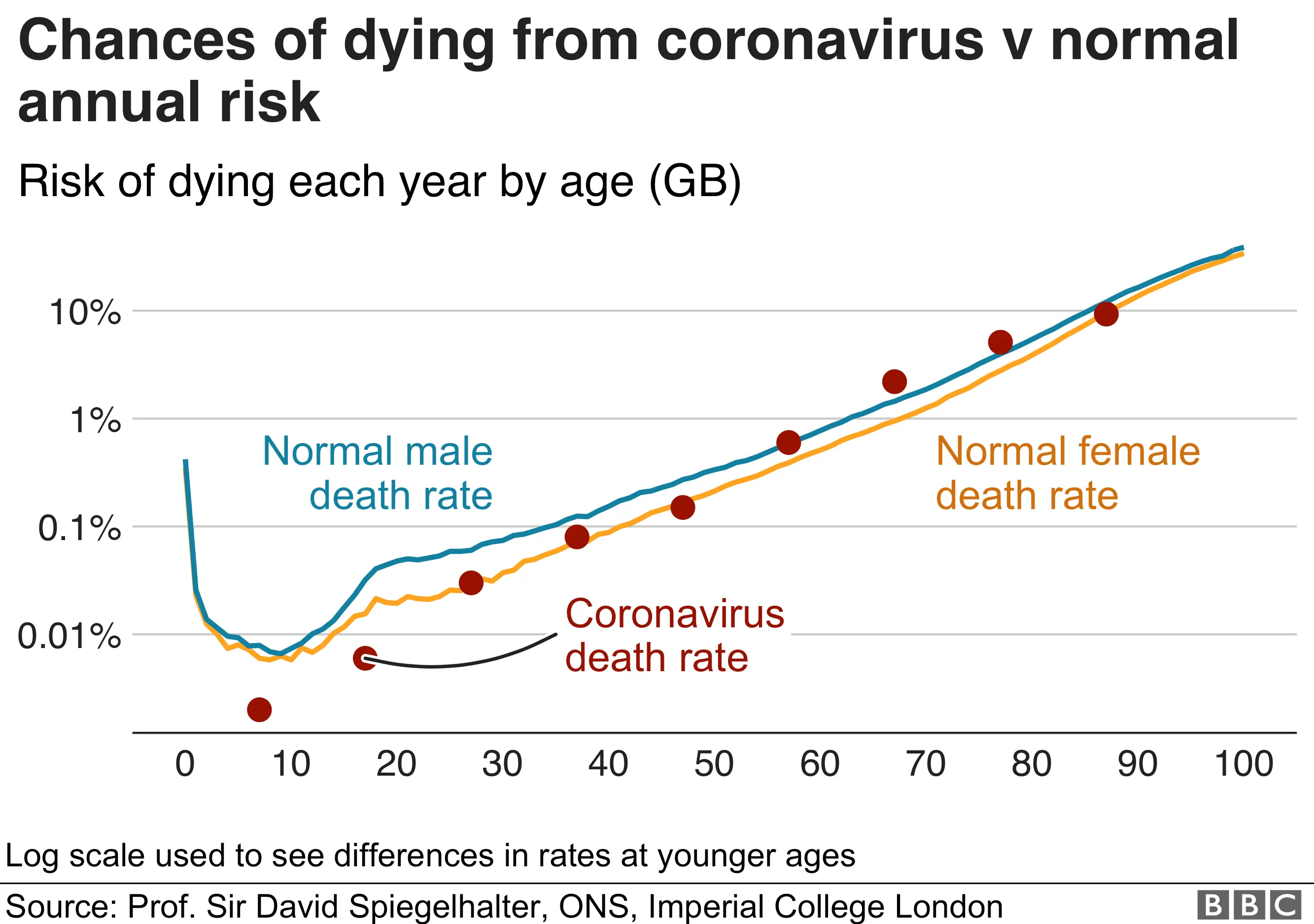
That does not mean there will be no extra deaths - but, Sir David says, there will be "a substantial overlap".
"Many people who die of Covid [the disease caused by coronavirus] would have died anyway within a short period," he says.
Knowing exactly how many is impossible to tell at this stage.
Prof Neil Ferguson, the lead modeller at Imperial College London, has suggested it could be up to two-thirds.
But while deaths without the virus would be spread over the course of a year, those with the virus could come more quickly - that, of course, was the logic for the lockdown to stop the health service being overwhelmed.
How should we interpret the death toll?
When it comes to flu, experts track what are called excess deaths.
During recent winters, there have been about 17,000 excess deaths a year, Public Health England says.
This, of course, can be done in the future only - it is why the ONS says it is too early to understand the true impact coronavirus is having on deaths.
Work also needs to be done to calculate the indirect impact of coronavirus and the lockdown.
The 6,000 extra weekly deaths identified by the ONS contained 2,500 which were not reported to be because of coronavirus infections.
What is causing these other deaths?
Experts have suggested they could be related to people being deterred from seeking treatment for medical emergencies such as strokes or heart attacks.
This is why the UK government's chief medical adviser Prof Chris Whitty was stressing on Thursday the "NHS was open for business".
Prof Robert Dingwall from Nottingham Trent University says there will certainly be "collateral damage" from other factors such as:
- mental health problems and suicides linked to self-isolation
- heart problems from lack of activity
- the impact on health from increased unemployment and reduced living standards
Others have also pointed to the health cost from steps such as delaying routine operations and cancer screening.
Meanwhile, University of Bristol researchers say the benefit of a long-term lockdown in reducing premature deaths could be outweighed by the lost life expectancy from a prolonged economic dip.
And the tipping point, they say, is a 6.4% decline in the size of the economy - on a par with what happened following the 2008 financial crash.
It would see a loss of three months of life on average across the population because of factors such declining living standards and poorer health care.
What will happen next?
 Getty Images
Getty ImagesThe problem the government and its advisers face is that they cannot make decisions with the benefit of hindsight - they have to react to emerging evidence.
Currently, the lockdown is aimed at suppressing the spread of the virus.
Once the peak has passed decisions will have to be made about what to do next.
The virus will not simply have gone away, and with a vaccine at least a year away the challenge will be how to manage it.
A balance will need to be struck between keeping it at bay and trying to control its spread to avoid a second peak, while at the same time allowing the country to return to normal.
Seeing the full picture in terms of lives saved and lives lost will be essential in getting those calls right.

- LATEST: Live coverage of developments
- EASY STEPS: What can I do?
- A SIMPLE GUIDE: What are the symptoms?
- MAPS AND CHARTS: Visual guide to the outbreak
- VIDEO: The 20-second hand wash

